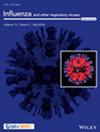The Potential for Twice-Annual Influenza Vaccination to Reduce Disease Burden
Abstract
Background
Influenza vaccination is recommended annually based on the evolving nature of influenza viruses and the waning of vaccine-induced immunity. The timing of vaccination is usually before the winter influenza season in most temperate locations, where the seasonality is clear and influenza activities on average last no longer than 6 months. However, many tropical and subtropical areas have year-round influenza activity and multiple epidemics within 1 year, against which annual influenza vaccination may not offer sufficient protection at the individual level.
Aims
A twice-annual vaccination program could utilize standard inactivated influenza vaccines or enhanced influenza vaccines. Here, we discuss three reasons to consider twice-annual vaccination as a strategy to improve protection.
Discussion
The first, mentioned above, is that some locations experience prolonged or year-round influenza activity. The second reason is based on the observation that vaccine effectiveness significantly declines about 6 months after vaccination particularly for A(H3N2) strains, and therefore, vaccination twice a year might be beneficial to maintain a higher level of immunity in the second half of each year. The third reason is to allow for receipt of the most updated vaccine strains, given that these are updated twice each year by the World Health Organization. We also discuss three potential barriers or challenges. The first potential challenge is knowledge gaps, because there are very few existing studies that used twice-annual vaccination. The second potential barrier is a concern over whether more frequent vaccination would lead to reduced immunogenicity or reduced clinical protection in the longer term. The third relates to concerns about cost or feasibility.
Conclusion
We discuss these issues and recommend comparative assessment of the incremental benefits and cost of twice-annual vaccination versus annual vaccination, as well as other vaccination strategies aiming to reduce influenza disease burden particularly in tropical and subtropical locations where there can be year-round influenza activity.


 求助内容:
求助内容: 应助结果提醒方式:
应助结果提醒方式:


